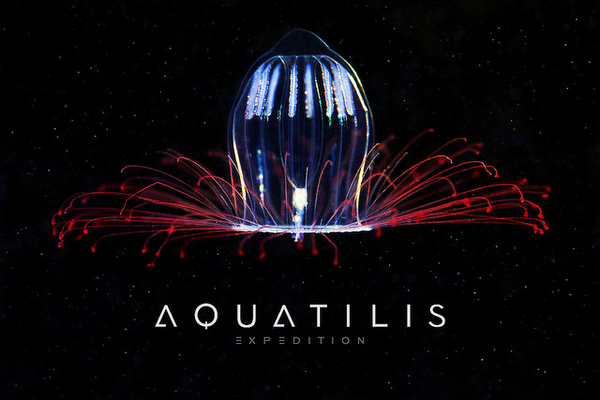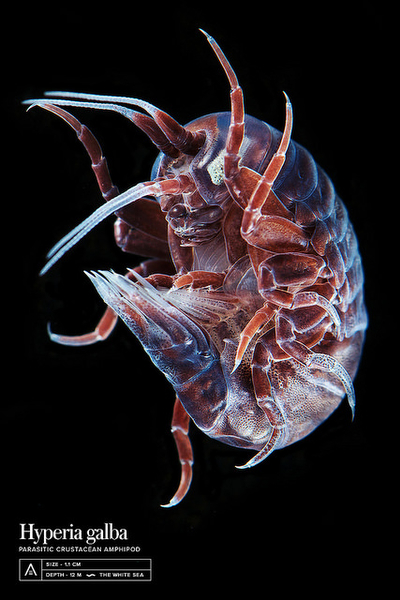Plankton research expedition seeks funding

The Aquatilis research expedition is setting out to study zooplankton in the Atlantic, Pacific and Indian oceans. Zooplankton forms the basis of the food chain and is hence crucial to the oceans’ health. The expedition intends to provide updates from the field via the web and social media. They are currently seeking funding via Indiegogo.
Press release
Aquatilis Expedition: Team of Marine Specialists Launches an Underwater Odyssey for the 21st Century
Young scientists plan an epic three-year journey through the unknown to explore a world of most extraordinary creatures.
Expedition Aquatilis is the first around-the-world popular scientific diving expedition, organized by a team of marine biologists, divers, underwater photographers, videographers and sailors. It is an unprecedented interdisciplinary journey through the world’s oceans.

The Expedition is scheduled to depart from Marmaris, Turkey in the summer of 2015. It will cover 35,000 miles over three years, spanning the Atlantic, Pacific and Indian oceans. The expedition’s route is specifically designed around poorly explored diving locations, which are marked as biologically interesting in order to provide the greatest level of scientific innovation. The project has three focal points: science, environmental discovery and public broadcasting. The central theme of the Expedition is the study gelatinous zooplankton.
Goals
The primary goal of Aquatilis Expedition is the research and study of gelatinous zooplankton (gelata) worldwide. “Zooplankton” is broadly defined as a type of animal, which cannot resist the current. These organisms can move within water, yet they drift wherever the currents carry them. Gelatinous zooplankton (gelata) are a subcategory of this group. Their unifying characteristic is a soft, fragile jelly-like body. The most obvious example of gelata is the jellyfish.
These creatures are vital to the health of the Earth’s ecosystems, since they form the basis of the marine food chain – fish, crustaceans and marine mammals, such as whales, depend on smaller gelata as a food source. Bigger gelata are predators, who feed on smaller crustaceans and preserve the balance of fish populations. Science currently knows of only about 1000 species of gelata which is an estimated mere 20% of all such creatures in the world. This lack of knowledge is explained by how difficult it is to study gelata in laboratories. Their jelly-like bodies break upon contact with harvesting equipment, making observation and study impossible. Aquatilis Expedition will be the first scientific mission to extensively address this obscure and important area of marine biology by studying gelata in their natural habitat.
The Expedition’s secondary goals are public broadcasting and environmental discovery.
Aquatilis Expedition is currently building a worldwide digital presence through a state-of-the-art website and the engaged use of social media. Using this audience groundwork, Team Aquatilis will produce a global scientific educational experience based on innovative formats which will include: video blogs, news reports, photographic and video updates, status updates from remote locations. Being the first expansive exploratory marine journey in decades, Aquatilis Expedition will record the effects of pollution and human activity on the oceans. A notable stop for the Expedition will be the Great Pacific Garbage Patch – an agglomeration of rubbish the size of Texas. Broadcasting images and reports from this area will encourage the public to re-think their attitudes to environmental problems.

The combination of these three distinct goal and a team built to complete them makes Aquatilis Expedition an unprecedented venture.
Team.
Team Aquatilis consists of 12 capable and versatile individuals. Each of them will perform an array of functions during the journey:
Alexander Semenov.
Head of the Scientific divers team at the White sea biological station of Lomonosov’s Moscow State University; world-known underwater photographer.
Expedition role: Expedition leader; underwater photographer; diver; sailor
Olga Grum-Gzhmaylo.
PhD, Engeneer/Microscopist at the White sea biological station of Lomonosov’s Moscow State University; Scientific divers team member.
Expedition role: Plankton researcher; diver; motorist; sailor
Tatiana Antokhina.
PhD, Lead Engineer, A.N. Severtsov Institute of Ecology and Evolution.
Expedition role: Marine zoologist; diver; underwater videographer; motorist
Elizaveta Ershova.
PhD, University of Alaska Fairbanks, School of Fisheries and Ocean Sciences, Laboratory of Zooplankton Ecology.
Expedition role: Plankton researcher; diver
Nikolai Shabalin.
Head of the Marine Research department at the Analytical Centre of Lomonosov’s Moscow State University; Curator for the Marine Ecology focus group at the Oil and Gas Centre of Lomonosov’s Moscow State University.
Expedition role: Marine zoologist; diver; administrator
Anton Makarov.
Lead specialist in ScanEx RDC; Scientific divers team member.
Expedition role: Diver; underwater videographer; satellite imagery expert; motorist
Ilya Ragzon.
Biology teacher in Moscow State School #57
Expedition role: Ichthyologist; teacher; diver; sailor
Olga Yatsenko.
Private biology teacher
Expedition role: Diver; teacher; reporter; sailor
Sergey Kovalev.
First class rescue in EMERCOM Russia; Senior teacher in I.M. Sechenov First Moscow State Medical University, Aviation and Space Medicine department.
Expedition role: Paramedic; rescue personnel; skipper; diver
Leonid Radun,.
International class rescue in EMERCOM Russia.
Expedition role: Paramedic; rescue personnel; skipper; diver
Evgeniy Vasilchenko.
Founder of “The Big Blue Technologies Inc.”, Canada, Victoria, B.C.
Expedition role: Underwater robotics expert; diver
Valentina Lebedeva.
Full-time Aquatilis Expedition support
Expedition role: Translator; reporter; PR manager; sailor
Route
The Expedition’s journey will cover the whole world and is specifically designed to cover new dive sites which have not previously been explored. It will include:
- Start from Marmaris, Turkey, through the Mediterranean for systems’ check and comprehensive filming within the sea;
- Azore Islands, Portugal to the Caribbean Basin;
- South, rounding Brazil and Argentina;
- Cape Horn, heading North past Chile;
- Peru, heading North towards California and San Francisco Bay;
- West, through the Trash Islands towards Hawaii;
- Through Oceania towards New Zealand;
- Past the Great Barrier Reef towards Papaua New Guinea;
- Philippines to Indonesia, rounding Sri Lanka;
- Indian Ocean Islands, past Madagascar;
- Cape town, rounding the Western coast of Africa;
- Finish on the Canary Islands.
The route is designed to last three years, including travel, diving work and short breaks in-between. The detailed mapping of specific diving locations includes intricate work with hundreds of scientific sources and experts from all over the world. At the moment, a detailed map of the Expedition’s first leg through the Mediterranean is available.
Vessel
The three-year journey will be completed on a custom-built, self-sufficient expedition vessel, a yacht called “Aquatilis”. It was built in accordance to Design Category A, making it resistant to winds up to 8 degrees (Beaufort scale) and waves of up to 4 meters. These parameters make it suitable for ocean crossings and adverse weather conditions which may be anticipated during the journey. The yacht is 70 feet long and is fit to carry 8 to 16 people at a time. “Aquatilis” is currently stationed in Marmaris, Turkey and is awaiting repairs, as well as customization work.
Current Status
Team Aquatilis is currently engaged several tasks: finalizing details of their route and identifying key diving locations; designing a custom-built remotely-operated underwater robot for photography; researching gelatinous plankton; studying sailing; building up their online presence through social media.
The voyage will be partially financed through crowd funding. The bar is set at $1,500,000, a sum which will allow the team to complete all the necessary preparations and set sail in 2015 – everyone is welcome to support the project on Indiegogo.
Images from the expedition will be posted on Flickr.